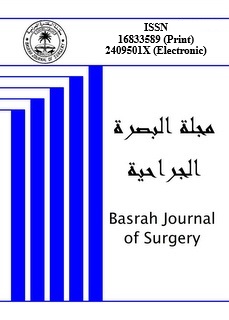Abstract
Abstract
Abrar A Abdul-Salam*, Jasim M Salman@ & Salam N Asfar# *MB, ChB, FICMS Anesthesiology, Al-Sadir Teaching Hospital, Basrah. @MB, ChB, DA, FICMS, Assistant Professor of Anesthesiology, Basrah College of Medicine. #MB, ChB, MSc, Professor of Anesthesiology, University of Basrah, College of Medicine, Basrah, IRAQ. Abstract From the time when succinylcholine(scoline) introduced to clinical anesthesia, intravenous route of administration of the drug has been broadly practiced. Severe bradycardia and arrhythmias may from time to time produced by single or frequent doses. The mechanism of bradycardia caused by succinylcholine administration has not been completely explained, it has been found that succinylcholine produce a unpredictable effects on the sinoatrial node. In our hospital , a second dose of succinylcholine is usually used for short surgical procedures that required good relaxation like anorectal surgery and orthopedic manipulation under anesthesia. This study aimed to discuss the conditions under which bradycardia appear during general anesthesia with oxygen, propofol, scoline, halothane, along with the use of second dose of scoline and assess the need for atropine to prevent this effect. Fifty patients aged between 20-50 years of American Society of Anesthesiologists (ASA) class I were included in this study, anesthesia was induced with propofol, scoline, along with oxygen halothane mixture, then 2nd dose of scoline was given 10 minutes later. Frequent pulse rate were recorded. There was considerable decrease in pulse rate of the patients after the 2nd dose of succinylcholine, 36% of the patients developed bradycardia (pulse rate below 60), and the mean reduction in pulse rate was (23±13 beats/min). However there is no need for the use of atropine since all of the patients return to normal rates (60-100 beats/min) within 1 minute spontaneously. Conclusion: It has been found that the use of scoline in one dose produce decrease in pulse rate but not reach to the bradycardia level, while the uses of another dose will result in significant reduction in pulse rate that can reach to the level of bradycardia. All patients return to normal level of pulse rate within 1 minute, therefore, there is no need to use atropine neither preoperatively nor after developing of bradycardia since it's a self limiting
